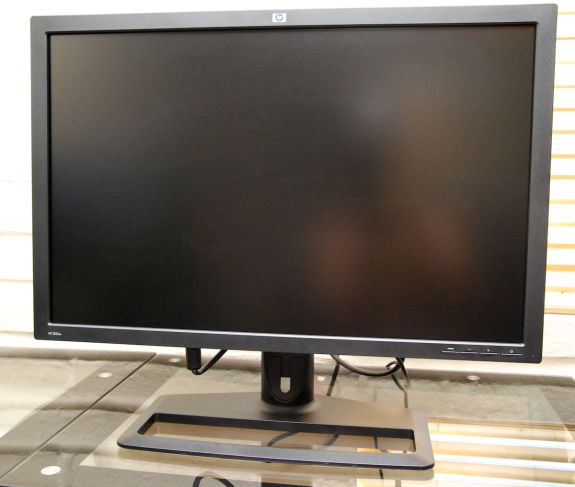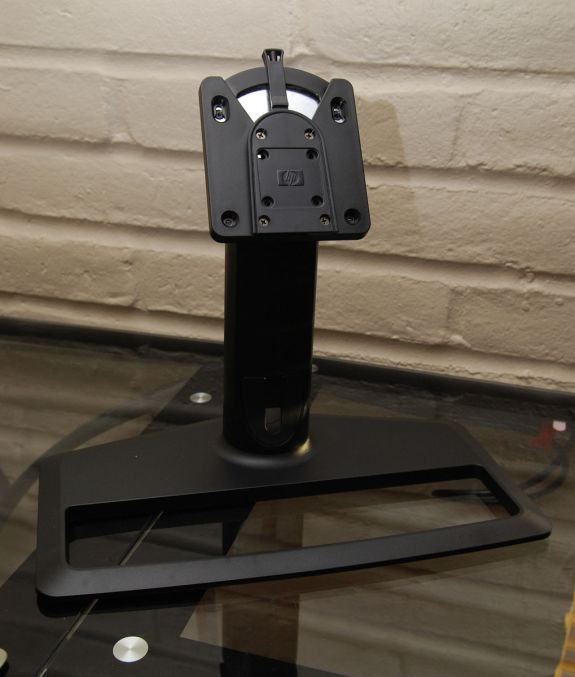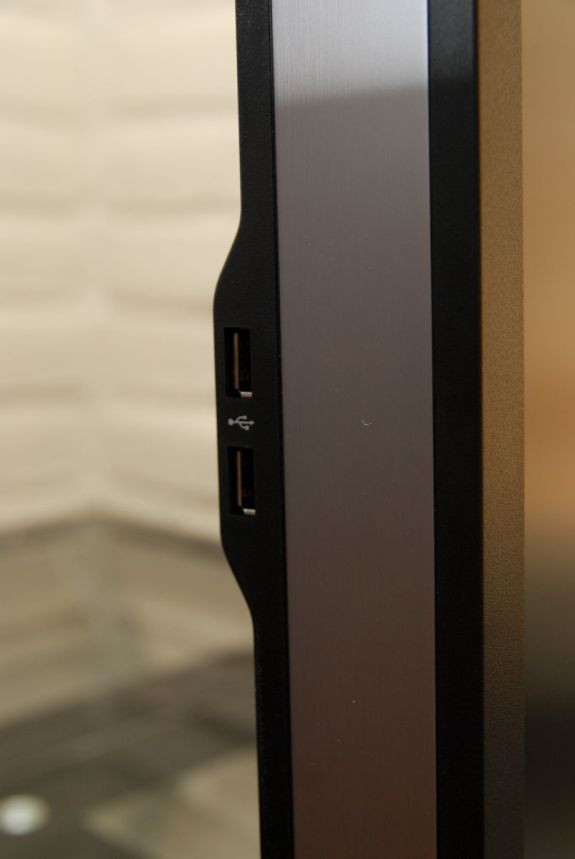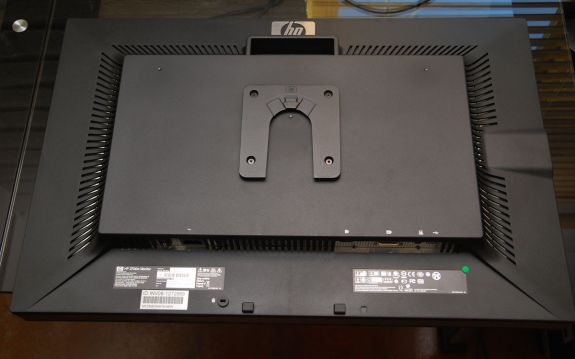A New 30" Contender: HP ZR30w Review
by Brian Klug on June 1, 2010 6:30 PM ESTRight out of the box, HP’s newest 30” display is huge - but you expected that and prepared by already clearing off your desk, right? ;)
Getting the beast of a monitor out of the packaging was actually exceedingly easy; remove one piece of styrofoam, and out comes the stand. One more large piece and the panel is right there for your picking.
The ZR30w display stand packs virtually all the bells and whistles a 30” stand should. There’s 4” of vertical travel, and movement in every axis except pivot (meaning you can’t rotate and use the monitor in portrait mode unless you roll your own VESA stand). HP’s quick release lock system is actually surprisingly useful. The monitor has a slide-in rack which mates up to the display stand; you can slide the monitor in, move a lever into the locked position, and you’re done. This is again the same mechanism used in the LP3065. I was very impressed with how solid and simple this configuration was - there’s no flexing or creaking, and no screws or assembly. It’s always a nice touch when out of box setup is painless - it’s downright critical when you’re juggling a 30” display. In addition, at the base of the monitor is a snap-on cable management cover for routing cables.
Around back is a much larger HP logo, cooling vents, and the display inputs. There’s also a semi hand hold which is great for guiding the monitor into the latch mechanism. Other than that, there’s not much else to speak of except the two USB 2.0 ports on the left of the display. What’s good about the ZR30w’s aesthetics is that they aren’t loud, garish, or overwhelmed with branding.
I noted in previous display reviews that sometimes at the lowest height setting the display connectors can hit the stand or otherwise be obstructed. Note that HP gives almost two entire inches of clearance for cables. This is the way it should be done - no problems connecting DVI cables, especially since dual-link cables are notably beefier.
We always like to use the monitor out of box without calibration for some time and just get a feel for it. While it’s easy to make a case that if you’re shopping for a 30” LCD, you’ve probably got the means to calibrate, it’s a harder case to make on the smaller displays. That said, I was immediately impressed with the ZR30w. Right away, the greens and reds were notably richer than on my two BenQ FP241W displays I use daily.
HP ships its manual on an enclosed CD-ROM, and also part of that installer is a color calibration .icm profile. As a rule, I’m going to start using manufacturer-supplied color profiles for my subjective uncalibrated testing and “uncalibrated” results, since they’re closest to what average users without colorimeters are going to do. Even with this ICM profile however, the panel seemed a bit cool in temperature to me (I later measured and found the same), but everything else seemed quite good.





















95 Comments
View All Comments
ranplett - Saturday, July 16, 2011 - link
I've purchased this monitor, and returned it thinking it was defective. The second one I received was exactly the same. The monitor was calibrated several times with both the Spyder 3 Pro and i1 Display LT, and it exhibits banding in bright colored gradients, and a VERY obvious difference in tone from the top left to the bottom right. The top left has a blue/green color cast, while the bottom right is far more pinkish. I'm comparing it to a HP LP2475w (also calibrated). The HP 24" is very uniform and has no banding issues.I was really hoping this is a good montior considering the price, but it really isn't good for critical color work (photogrpahy/video). The review on this site claims that it is very accurate but I disagree.
At this point it looks like I'm going to ask to return it in exchange for a NEC 27". The NEC 30" is $1000 more!
deon - Thursday, September 1, 2011 - link
thanks for your comment mate! i was looking to buy it for color work, but after reading your review, i will probably go with NEC. It bums me out that NEC does not have a zero dead pixel return policy on their 2 grand monitors.deon - Wednesday, August 31, 2011 - link
The price difference between HP 30 and NEC 30 is over 1200$!HP is around 1300$ and NEC 30 is over 2500$, but when i looked at the stats and numbers provided here, it seems like NEC is not worth of spending extra 1200$ and HP can be very good enough for doing professional color work (vfx compositing, color grading, photography).
Is that so, or am i delusional? Can you please comment/clarify why i should or should not spend extra 1200$ on NEC, when this HP performs almost as good. Looking forward for any replies and suggestions!
walkswithmighty - Tuesday, September 20, 2011 - link
I just thought I would chime in, and let you know that I just got this adapter today and was excited to try it on my ZR30W: http://www.amazon.com/gp/product/B004I6IYSM ( startech hdmi to dp powered adapter )does not work with this monitor and the xbox 360 hdmi output. I hope that this helps anyone that wants to try this adapter out, in order to try and get a hdmi source to work on the display port of this monitor.jonsinache - Tuesday, January 22, 2019 - link
I just bought this monitor used last month and it still works great.